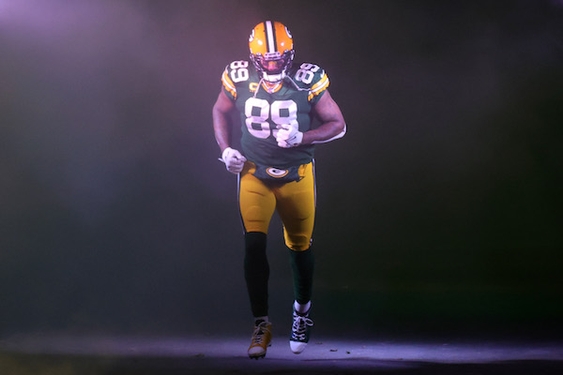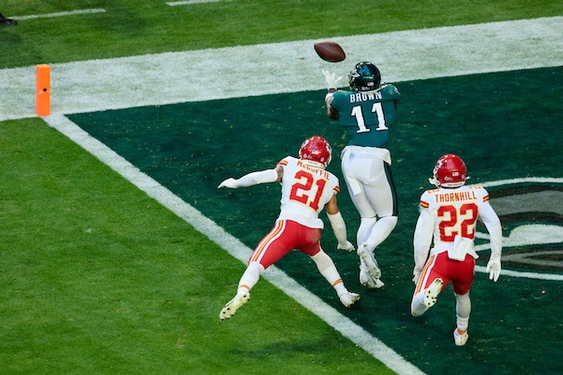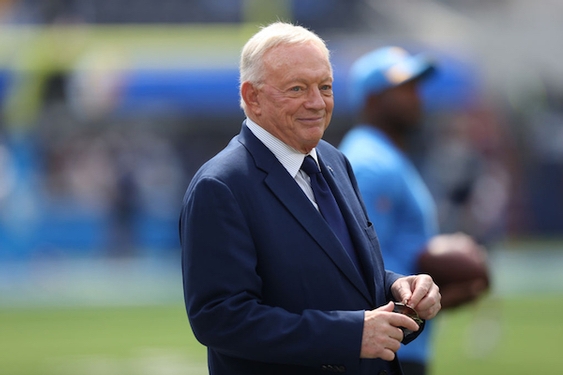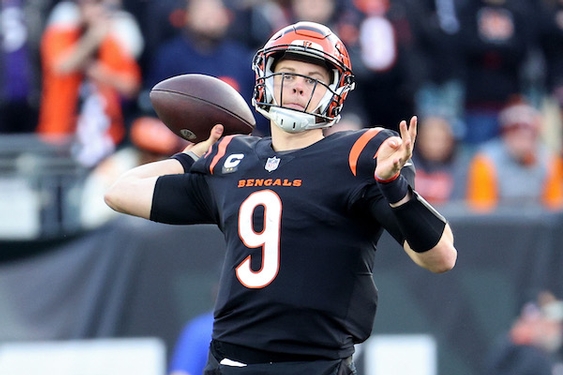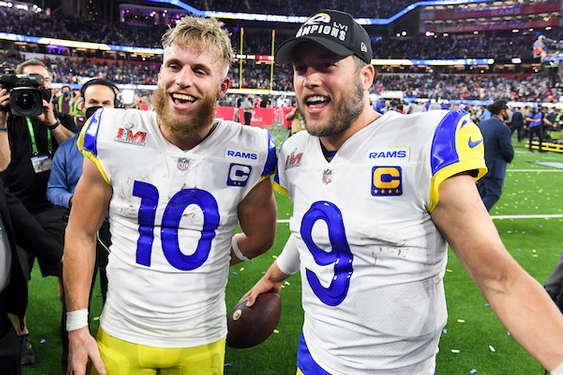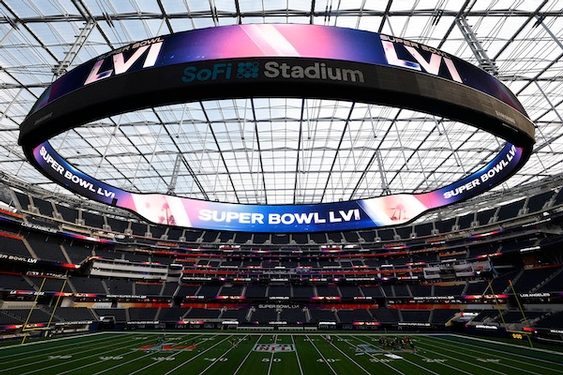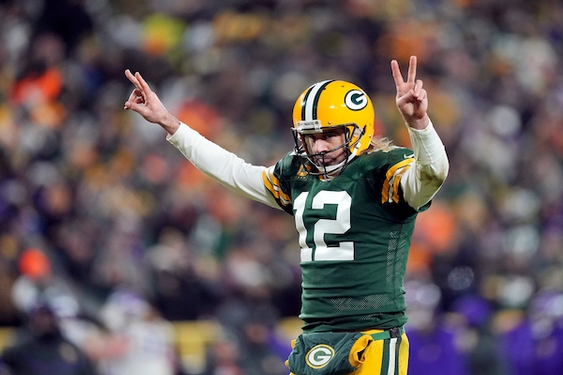Receiver George Farmer lined up for his 40-yard dash at USC's pro day last month. He needed to show off, and did, with an eye-opening time of 4.35.
NFL scouts took note.
"I knew I had a low 4.4 in me, but I knew I had to get it out," Farmer said.
A day earlier, across town, defensive lineman Ellis McCarthy needed to give his NFL hopes a boost. He decided to also work out as an offensive lineman during UCLA's pro day.
NFL scouts more or less shrugged.
"I don't know what [NFL] teams are thinking about Ellis," UCLA Coach Jim Mora said. "I haven't had a whole lot of people ask me about him."
Farmer and McCarthy are the type of players who roll the dice each year. Both declared for the NFL draft, forgoing their remaining college eligibility. Neither left school as a "sure thing."
Such situations caught the NFL's eye after last year's draft. The number of underclassmen declaring for the 2014 draft was 107, an all-time high. More worrisome was the fact that 45 went undrafted.
There was a fear that players overvalued their potential, or worse, were receiving bad advice from those looking to profit off them.
The NFL, working with the NCAA and coaches in the Football Bowl Subdivison, increased its education efforts last fall. The number of underclassmen declaring for this year's draft dropped to 84, the first decrease since 2009.
"When you lose eligibility, have no degree, no real skills, are underdeveloped as a football player, and now you're back home, that's not a story we want, that's not the value of football," said Troy Vincent, the NFL's executive vice president of football operations. "That's a bad dream."
Vincent said the NFL decided "if we're going to inform a young man who potentially would forfeit eligibility, we needed to be as accurate as possible."
The NFL now limits their evaluations to three categories — first round, second round and neither. The league also put a cap of five evaluations for underclassmen per school.
Vincent said the number of underclassmen requesting an official NFL evaluation fell from 214 last year to 149 this year, with 123 players being advised to remain in school. Only 33 of those declared for the draft.
"The high percentage of guys that declared and didn't get drafted was a black eye for the NFL," Mora said. "They were really good this year about educating underclassmen as to the process."
From 2004-14, USC and UCLA have had 27 underclassmen declare for the draft, with 18 selected the first or second round. Only four went undrafted, but all came in the last two years.
USC had four underclassmen declare early this year: Farmer, receiver Nelson Agholor, defensive end Leonard Williams and running back Javorius Allen. UCLA had two, McCarthy and quarterback Brett Hundley.
"No one is saying, 'don't make decisions,' " Vincent said. "What we're asking is to make an informed decision; don't go off someone talking in your ear or something you saw on television."
Some decisions are easy.
Williams is considered a high first-round pick. Hundley is expected to go in the first two rounds.
Other players took a leap of faith.
Farmer was a talented receiver at Gardena Serra High, where he was considered a better prospect than earlier Serra graduates Robert Woods and Marqise Lee, who play for the NFL's Buffalo Bills and Jacksonville Jaguars, respectively.
Farmer's time at USC was expected to be a layover until he could go to the NFL. But a position change to running back slowed him as a freshman. He suffered a knee injury as a sophomore. Last season, he caught 25 passes. Still, he came out.
"My decision was based on the fact that I had only one class to complete for my degree," Farmer said. "I am healthier that I ever was, and felt my skill set is suitable for NFL teams."
Farmer did not ask for an evaluation and was not invited to the NFL combine. He pinned his hopes on his pro day at USC, which appears to have paid off. Farmer has crossed the nation for interviews with NFL teams the last two weeks.
"I'm pretty satisfied with the results," Farmer said.
McCarthy was a can't-miss lineman from Monrovia High. It was considered a coup when UCLA coaches flipped his verbal commitment to California in 2012.
Two knee surgeries as a freshman delayed his development. He battled weight issues through his three seasons. McCarthy did start eight games as a sophomore, but spent last season as a reserve.
McCarthy's size (6 feet 5, 330 pounds) was intriguing, but he fell into the NFL's "neither" category on his draft evaluation. The recommendation was he remain in school, but he declared anyway.
His run-up to the draft was spent watching UCLA's spring practice one day last week. McCarthy declined to speak about his decision.
"I think [the motivation] is different for each individual case," Mora said. "Some guys are ready. Some guys are chasing the dream. Some guys are chasing the money. I think you have to approach it that way when you're giving them advice."
The concern, Mora said, is "players have a lot of friends and people are always going to say things to them. You hope they listen to the people who have their best interest in mind."
That isn't always the voice a player hears.
"The good agents never over-inflate a guy's draft value, but the lower-tier guys will tell a guy he's going to go in the third or fourth round, when he's probably not even going to get drafted," said an NFL scout, who was asked not to be identified. "Part of it is they don't have very good contacts within the NFL, and part of it is they're just trying to get a guy to sign with them."
Those agents "get the parents excited," the scout said. "They never really realize how few jobs there are in the NFL and how short those careers are."
NFL officials had enough after last year and stepped in.
"We went, 'Wait a minute, this could get out control,' " Vincent said. "What we're trying to do is foster education."
Farmer said he consulted Woods and Lee. Both had declared early for the draft and were second-round draft picks. Both, though, came out of USC with better statistics and a bigger buzz.
Their message, Farmer said, was "You've got to do what's best for you."
The NFL, though, wants coaches to be that voice, backed by the league's evaluations.
"The coaches told us they needed information on [the NFL's] letterhead so the kid doesn't think they are doing them wrong," Vincent said.
Still, even with more focused evaluations and better advice, there is one thing that every player believes.
"All I need is an opportunity and getting to somewhere and showcasing what I can do and letting that take over from there," Farmer said.
Times staff writers Sam Farmer and Gary Klein contributed to this report.
———
©2015 the Los Angeles Times
Visit the Los Angeles Times at latimes.com
Distributed by Tribune Content Agency, LLC.





